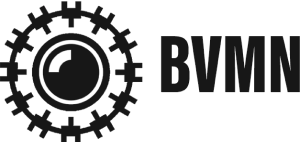Denied any medical assistance after falling from a bridge
| 28.02.2023 | Raca border crossing between Serbia and Bosnia | Collective Aid | 44.911379, 19.296985 | Bosnia | Serbia | yes | no | yes | yes | no | no | 17 - 18 | 3 | Afghanistan | fingerprints taken, photos taken, personal information taken, no translator present, denial of medical assistance | 3 | use of force to retrieve fingerprints, use of force to fit a group in the back of a van, pushing and shoving, yelling in a threatening way | 2 men in black uniforms reported to exactly resemble the uniform of the Republika Srpska police force. Also, one man in a camouflage uniform that had four yellow stars on it. |
On the 28th of February, a group of three Afghan adolescent men (17, 17 and 18) tried to cross the border from Serbia into Bosnia and Herzegovina at the Rača border crossing. Two of the young men were present for this interview.
They had to cross a bridge by creeping underneath the bridge, hanging on to the inside walls of the bridge and sliding along the extremely narrow bit of metal that people can stand on. It is approximately a two-meter drop from the bridge to the river flowing beneath. While they were crossing, they noticed three men in uniforms at the bottom on the Bosnian side looking up at them and watching.
The respondents reported that two of the men were wearing all-black uniforms with a red and blue tags on the arms and no head coverings or masks. One of the other men was dressed in a full camouflage uniform with four yellow stars on it. The respondents described the uniforms in detail and were then shown a gallery of uniforms worn by the police force of the Republika Srpska and confirmed that they looked exactly like those uniforms. Additionally, they searched for a picture online to explain the look of the person dressed in the camouflage uniform as well as the vehicle (van) which was used to transport them (further details below).
The men in uniforms were taking pictures and videos of the adolescents while they were trying to get across the bridge. One of the respondents fell from the bridge and severely injured his back, at the time of the interview this injury was not clearly visible anymore as the pain he was still experiencing was caused by internal damage. The other respondent had bruises on his hands which were still visible at the time of this interview. They ignored the boys calls for help and when the respondents had all reached the ground the uniformed men reprimanded them. The three Afghans were forced into a van by the uniformed men. They described the van as a white Volkswagen which was not big enough to stand up in.
They were taken to a small police station that was close to the bridge. The respondents described it as a small white building. In this building they were taken to a room that they described as an interrogation room equipped with cameras. The uniformed men intended to take their fingerprints there but the machine didn’t work, so the men in uniform walked them to a different station which was a 10-minute walk away. The respondents detailed that there was no light in the room they were taken into. The respondents were hesitant to give their fingerprints but they were told that they have to do this. One of the respondent’s details how they violently forced his hand onto the machine which scans the fingerprints. The uniformed men also took pictures of the boys faces and eyes. The respondents explain that none of the procedures were explained to them and that the men in uniform yelled at them in broken ["bad"] English even though they told them they understand "only Farsi". At no point was there a translator present or any effort made to contact one, as per the respondents. They were then forced into the back of the van, driven over the border for two hours and left to their own devices by the roadside in Serbia.
They were denied any medical assistance despite the respondents’ requests and obvious injuries. At the moment of the interview, the respondents were in Bosnia, when the respondent who had injured his back arrived in the Blažuj TRC, he was prescribed antibiotics which did not relieve the pain he was still in.
